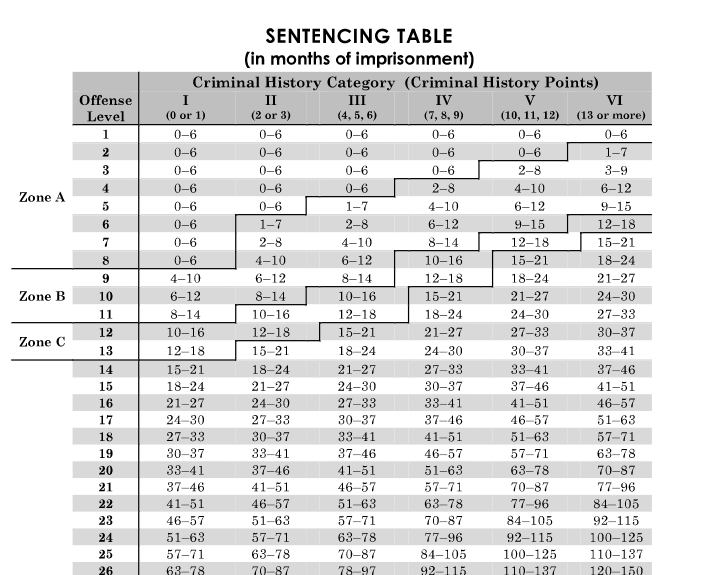As you or your loved one’s case proceeds, you will hear references to the “guideline range” that applies in your case for sentencing. The guideline range must be calculated in every federal case. The range comes from the Federal Sentencing Guidelines Manual.
The Federal Sentencing Guidelines Manual is created by the United States Sentencing Commission. The Commission is an independent agency of the judicial branch of the government of the United States and is responsible for producing the sentencing guidelines used by all judges in federal criminal courts. The guidelines themselves are a set of rules and policies used to determine the “appropriate” sentence for a federal criminal offense. The guidelines take into account the seriousness of the crime, the defendant’s criminal history, and other relevant factors.
But let’s pause there a moment. The guidelines are not laws written by Congress, they’re written by a government agency. So unless your case contains a mandatory minimum sentence, which the judge is bound by and cannot ignore, because Congress has written it into law, your judge will have great discretion at the time of sentencing. However, in order to comply with proper sentencing procedure, your judge must calculate the guideline range. But that range is just the starting point for the sentence. The guidelines are not mandatory, meaning the judge must consider the guideline range, but may sentence above or below it.
In order to calculate the range, the guidelines assign an “offense level” which is calculated based upon the seriousness of the crime along with specific circumstances of the offense, such as whether the offense involved violence or guns (which would increase the offense level). The second calculation is the “criminal history category.” The criminal history category is determined by the defendant’s prior criminal history.
With those two calculations made, a grid, called the sentencing table, is used to reach the “guideline range.” For instance, if you look at the chart below and we had an offense level of 20 and a criminal history category of I, the guideline range would be 33-41 months. And after reaching that number, the judge may sentence within that range, or above or below it. Again, it is important to remember that some cases carry a mandatory minimum sentence by statute. So if using our example, the mandatory minimum sentence was 5 years, the guideline range of 33-41 months would not matter, the statutorily required sentence of 5 years would be the starting place for the judge’s sentence.
Click here to see the guidelines sentencing table and to look at the current Guideline Manual, click here.
The guidelines can be confusing, ask your attorney to help you understand your guideline sentence.



